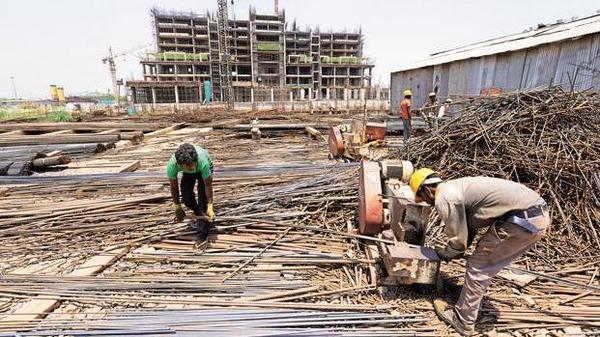
-kcvC--621x414@LiveMint_1551227596721.jpg)
Mumbai: The story of investments in India over the past few years has largely been one of gloom, with the gargantuan pile up of toxic assets taking a toll on the capex cycle. However, there is a positive and less-emphasized aspect to India’s long-run investment story: that of rising convergence.
A Mint analysis of the investment shares of the 20 major state economies, which collectively contribute to 96% of India’s gross domestic product (GDP), shows that the share of the largest state economies in the overall investment pie has shrunk while that of other states has risen.
The convergence in investments across states has been driven primarily by two factors: the decline in the aggregate share of investments of the five largest state economies and the rise of middle-sized state economies such as Haryana, Andhra Pradesh (and Telangana), and Delhi.
As a result, the investment map of the country looks more even today than it did at the start of the 21st century.
The analysis is based on data from the Centre for Monitoring Indian Economy (CMIE) and excludes the smallest states, which account for small shares of economic output. The shares of investments rather than the absolute numbers have been considered here to gauge the ability of each state to attract investments relative to all others.
While the share of the five largest state economies—Maharashtra, Tamil Nadu, Gujarat, Uttar Pradesh and Karnataka—in overall investment activity has declined over the past two decades, the aggregate investments share of the five smallest state economies among the major states—Odisha, Chhattisgarh, Jharkhand, Assam and Uttarakhand—has not increased.
The investment shares of the five largest and five smallest state economies converged significantly in the early 2000s but began diverging after that. Among the larger states, Tamil Nadu has been among the biggest losers, with its share in overall investments declining by almost half since the turn of the century. Surprisingly, the investment share of Uttar Pradesh has doubled over the same period.
Nearly all of the increase in investment activity in the state has been driven by investments in transport services, construction, and real estate, data shows.
Among the smallest state economies in the group of 20 major states analysed here, Odisha has seen the sharpest fall in investments over this period but its share is still the highest (7.2%) among the five smallest states. Assam and Jharkhand have seen sharp growth in investments over the same period but their shares in the investment pie are still quite low.
Overall, Uttar Pradesh and Andhra Pradesh (including Telangana) have witnessed the most impressive increase in investments since 2000. Haryana too has witnessed a rise in investment share over this period but most of this rise took place between fiscal 2000 and fiscal 2007. Since then, Haryana’s share has actually declined though its share still remains more than what it was at the turn of the century. Andhra Pradesh by contrast has seen its share rising in the post-2007 period. Uttar Pradesh’s rise has been consistent.
For the five smallest state economies, the rate of project stalling remains the most worrying trend.
Even after falling sharply in the last couple of years, the rate of project stalling remains at a historic high for these states. The largest state economies have fared no better with their rate of stalling, though below that of small state economies, having steadily risen over the years.
Stalling rate is calculated as a percentage of the total projects under implementation so that the values are comparable across time.
The high rates of stalling have meant low project completion rates for both the smallest and the largest state economies. These factors combined with the rise in bad loans over the past decade seem to have contributed to an across-the-board decline in fresh investment announcements.
Also read: India’s worth as an investment destination
Fresh investments in the bottom five state economies fell to a 14-year low in 2017-18, while those in the top five fell to a four-year low.
The lack of an investment recovery and the high rates of stalling do not bode well for the Indian economy in the long run. Though the investment pie is being split more equally than before, the pie itself does not seem to be growing fast.
[“source=livemint”]
